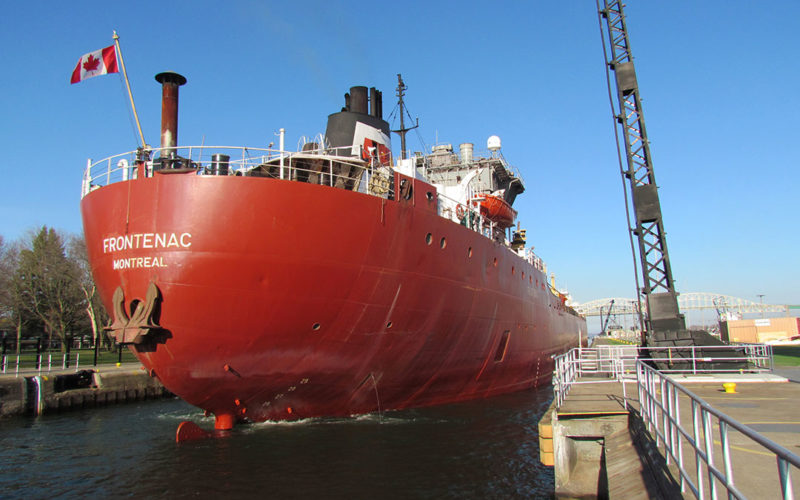[gtx_gallery]
Shipping associations on both sides of the border have raised objections to Canada’s new ballast water regulations.
The rules, announced in June, aim to minimize the spread of invasive species that can harm fisheries, infrastructure and native species. The rules cover Canadian vessels all over the world, but also will impact American vessels calling on Canadian ports within the Great Lakes.
The regulations require vessel operators to plan for managing ballast water to reduce the number of organisms in it, typically by installing a ballast water treatment system. Operators must also carry a valid certificate, keep records and be regularly surveyed and inspected. Ships built in 2009 or later have until 2024 to meet the rules, while older ships must meet them by 2030.
“Canada is taking action to prevent aquatic species invasions, which harm the environment and the Canadian economy,” Minister of Transport Omar Alghabra said. “The new ballast water regulations will limit the introduction and spread of these species by vessels while protecting Canada’s biodiversity.”
Jim McKane, chair of the Canadian Section of the Great Lakes Fishery Commission, estimates the regulations will prevent up to 34 invasive species from reaching Canadian waterways. The use of ballast water treatment by all vessels calling on Canadian Great Lakes ports, he added, would help reduce the spread of invasive species by 82 percent.
Canada’s Chamber of Marine Commerce, however, called the new rules “half-baked” and counterproductive in meeting the country’s environmental goals. The chamber believes the regulations unfairly target Canadian ship operators, which have spent billions of dollars on new fuel-efficient eco-ships, while giving an extra six years for compliance to owners of older vessels — including virtually all U.S. ships operating in the Great Lakes-St. Lawrence Seaway.
The chamber has cautioned Canadian officials that the changes would create an uneven playing field between the Canadian and the U.S. domestic fleets. The latter operates virtually all older vessels, and the chamber argues the rules would discourage investment in new fuel-efficient ships.
“This is a very disappointing development that will risk jobs and stall economic recovery, while doing little to protect the environment,” Bruce Burrows, chamber president and CEO said.
The chamber asserts ballast water has not introduced non-native invasive species into the Great Lakes since 2006, when new Canada/U.S. ballast water requirements jointly took effect. The chamber also argues Canadian and U.S. domestic vessels pose no risk of introducing new invasive species because they do not travel overseas.
Shipping groups believe the cost of installing ballast water treatment systems will exceed Transport Canada’s estimates. The chamber, for instance, pointed to a recent study by Research and Traffic Group showing it would cost more than $560 million to finance, install and operate treatment systems on all Canadian domestic ships operating exclusively within the Great Lakes and St. Lawrence River. Those new ballast treatment systems, the report argues, would provide just $31 million in environmental benefits.
The Canadian rules also contradict American rules in the binational waterway, the chamber said. The U.S. Environmental Protection Agency (EPA) recently determined ships operating solely in the Great Lakes and St. Lawrence built after 2009 face the same hurdles to install systems as older ships because there are no current ballast water management systems that are practical or suitable. The chamber called the pre- and post-2009 distinction “completely irrational and puzzling in the circumstances.”
Gregg Ruhl, CEO of Algoma Central Corp., which owns and operates the largest Canadian domestic fleet on the Great Lakes, said targeting newer vessels could cause ship operators to prolong the use of older, less-efficient ships.
“Algoma Central has spent over $500 million to renew our Great Lakes fleet with 11 brand-new vessels that are 40 percent more carbon-efficient and are equipped with scrubbers that virtually eliminate many air pollutants,” Ruhl said. “Does it make sense for companies to invest in fleet renewal if it puts them at a disadvantage to their competitors?”
American shippers are also critical of the new Canadian rules, but for different reasons.
“We believe that Canada has overreached with their regulations. They’re the only country in the world that we know of that regulates ballast water loading,” said Jim Weakley, president of Lake Carriers’ Association, the trade association representing 11 companies and 46 U.S.-flag vessels operating on the Great Lakes. “Every other country in the world, including the United States, regulates ballast water discharge. Canada has chosen to regulate ballast water loading in Canada for discharge in the U.S., and we think that the U.S. government should regulate ballast water discharges.”
“We also think they have overreached because…in the United States you either meet a discharge requirement or you don’t,” Weakley said. “But Canada has chosen to say that if you have equipment on board and you’re using it, it doesn’t matter if you meet discharge standards or not.”
The Lake Carriers’ Association also notes that Canadian shippers operate more vessels built before 2009 than their American counterparts that would benefit from the additional six-year lead-in period.

